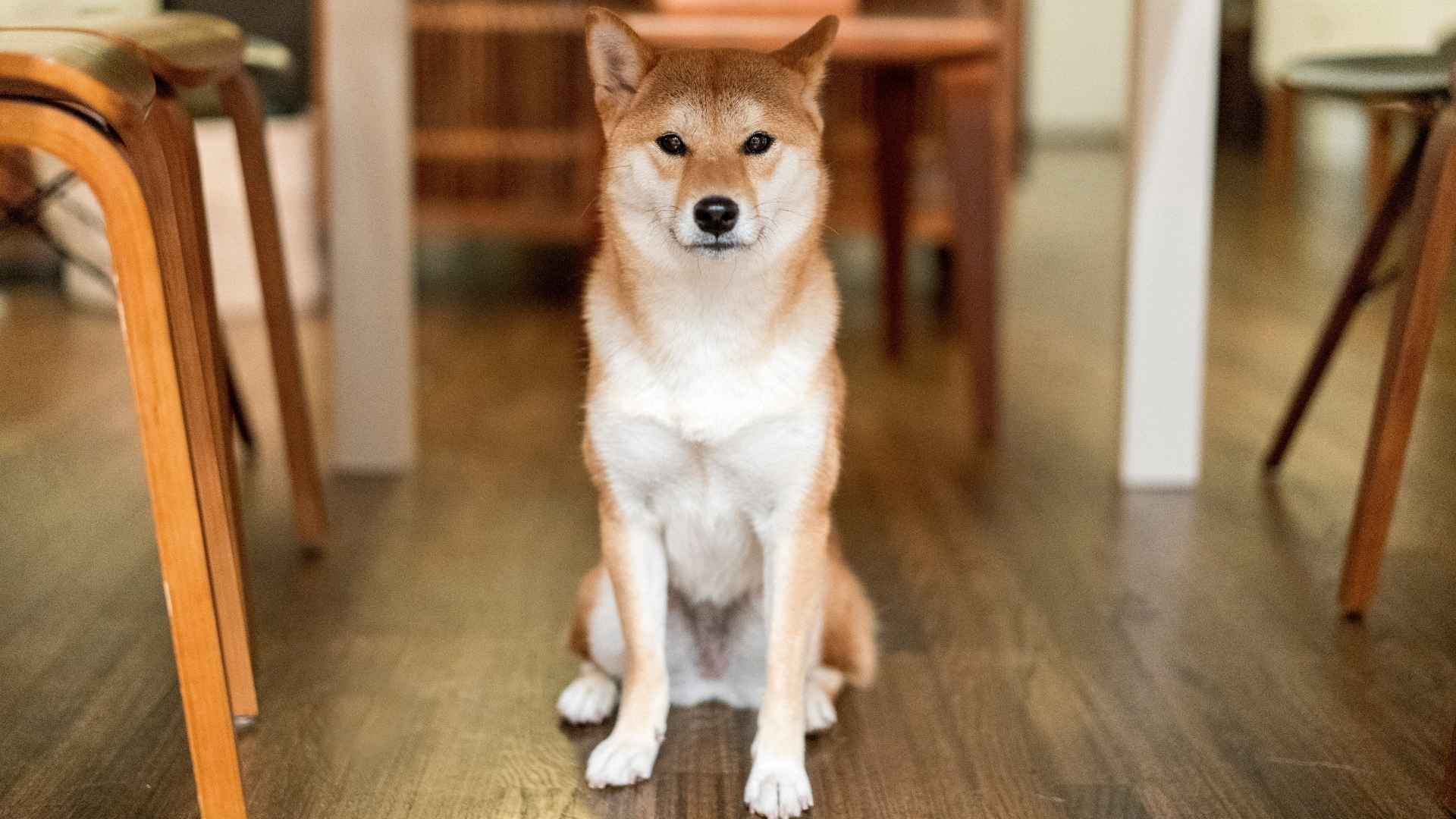Let’s be honest—no one wants a dog that treats every falling leaf or distant car door as an emergency broadcast. While barking is a natural part of canine communication, some dogs take it a bit too seriously.
But here’s the good news: not all alert dogs are loudmouths. In fact, some of the most vigilant watchdogs barely make a sound unless it really matters.
Whether you live in an apartment, have sensitive neighbors, or just value peace and quiet, you don’t have to sacrifice security for serenity. There are calm dog breeds that keep a close eye on things without giving you (or your ears) a hard time.
Today, we’ll introduce you to the perfect balance—dog breeds that are calm, observant, and ready to alert you without barking at every gust of wind. They’re the silent sentinels of the dog world, keeping watch without raising the volume. Ready to meet the whisper-level watchdogs?
Let’s dive in and discover which dogs give you peace of mind and peace and quiet.
Alert Dog Breeds That Don’t Bark Too Much
1. Basenji
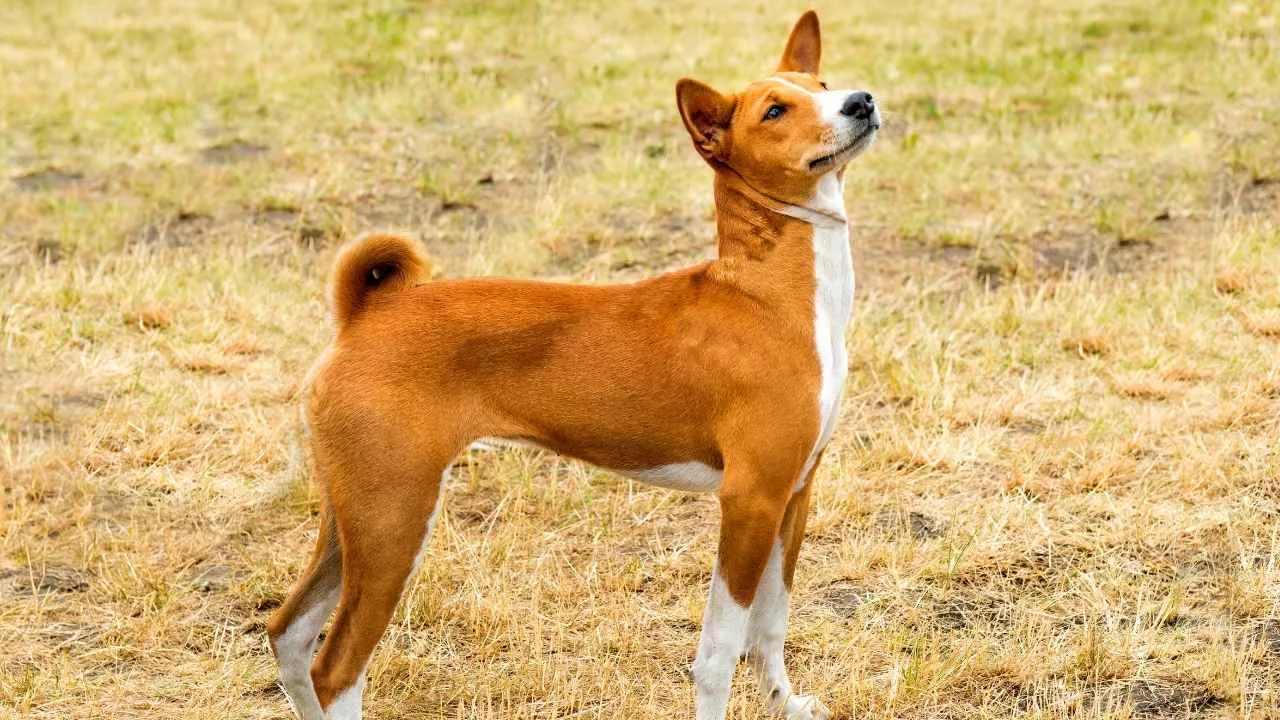
Meet the Basenji, often nicknamed the “African barkless dog” — and for good reason. These clever pups don’t bark like your typical watchdog, but don’t mistake their silence for calmness. They’ve got a whole repertoire of quirky sounds that are part yodel, part chortle, and 100% “I’m here, pay attention!”
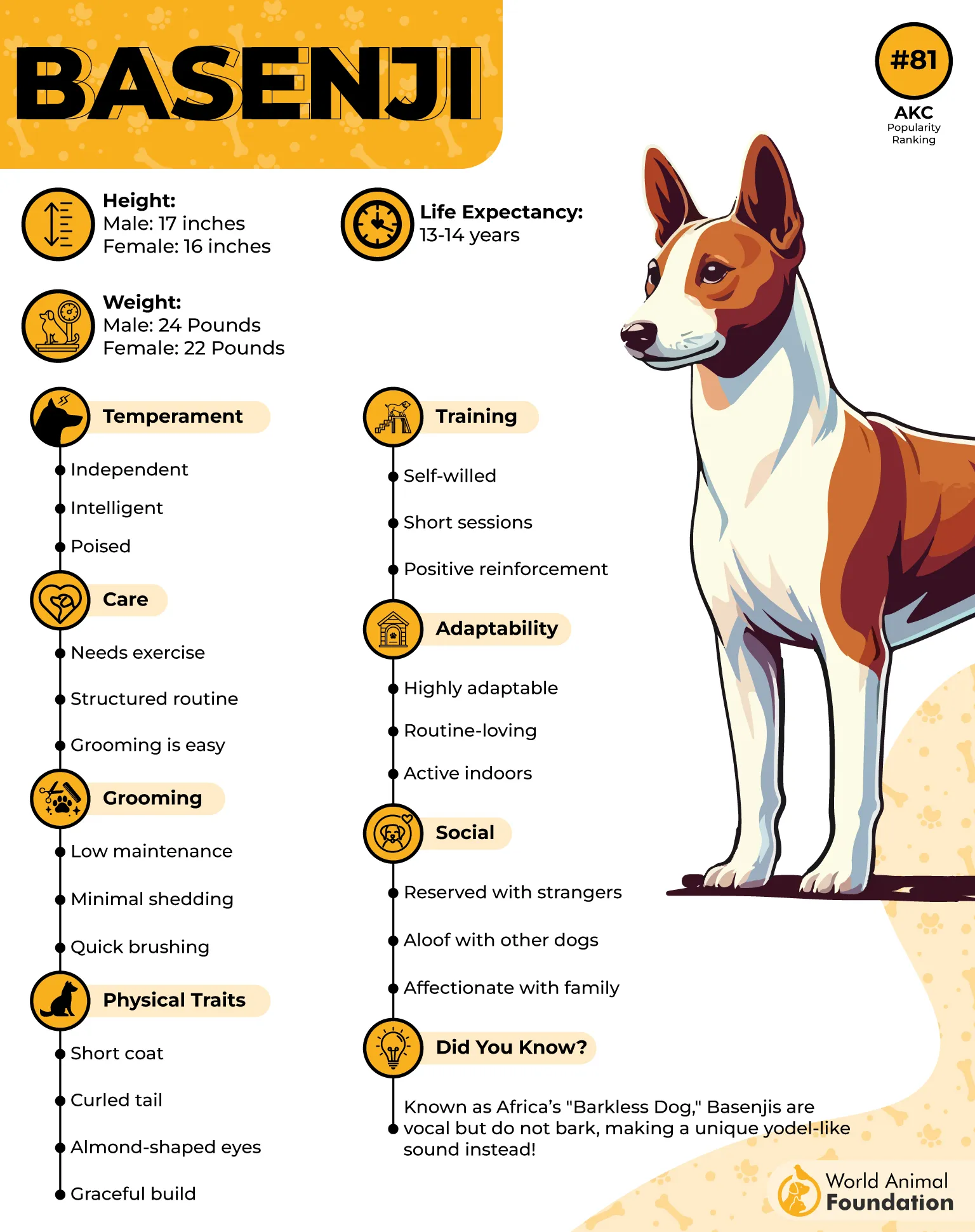
Originating from Africa, Basenjis were bred to be alert hunters, so they’re naturally tuned into what’s happening around them. Instead of the usual woof-woof, expect an occasional yodel or a strange little howl that’s more “Hey, look over here!” than “Intruder alert!”
With their sleek, compact bodies, Basenjis are built for powerful, swift movement—earning them the nickname “miniature racehorses.” Packed with energy, these small dogs require plenty of daily exercise to stay happy and healthy.
Why Basenjis Are Perfect for Quiet Alert Duty:
Barkless but not silent — they’ve got a unique vocal playlist
Super alert and quick to notice anything unusual
Low-maintenance grooming thanks to their inner cat instincts
They also thrive on variety in their activities to keep their minds engaged. Without enough mental stimulation, Basenjis can quickly become bored and develop a moody attitude.
One of the coolest things about Basenjis? They’re practically cats in dog’s clothing, says WebMD. Grooming is a breeze because these neat freaks keep themselves spotless with a thorough self-licking routine.
Heads up: Basenjis are smart and independent, which means they’ll alert you in their own quirky way — but they might also decide it’s nap time before you get a chance to say “Good dog.”
2. Shiba Inu
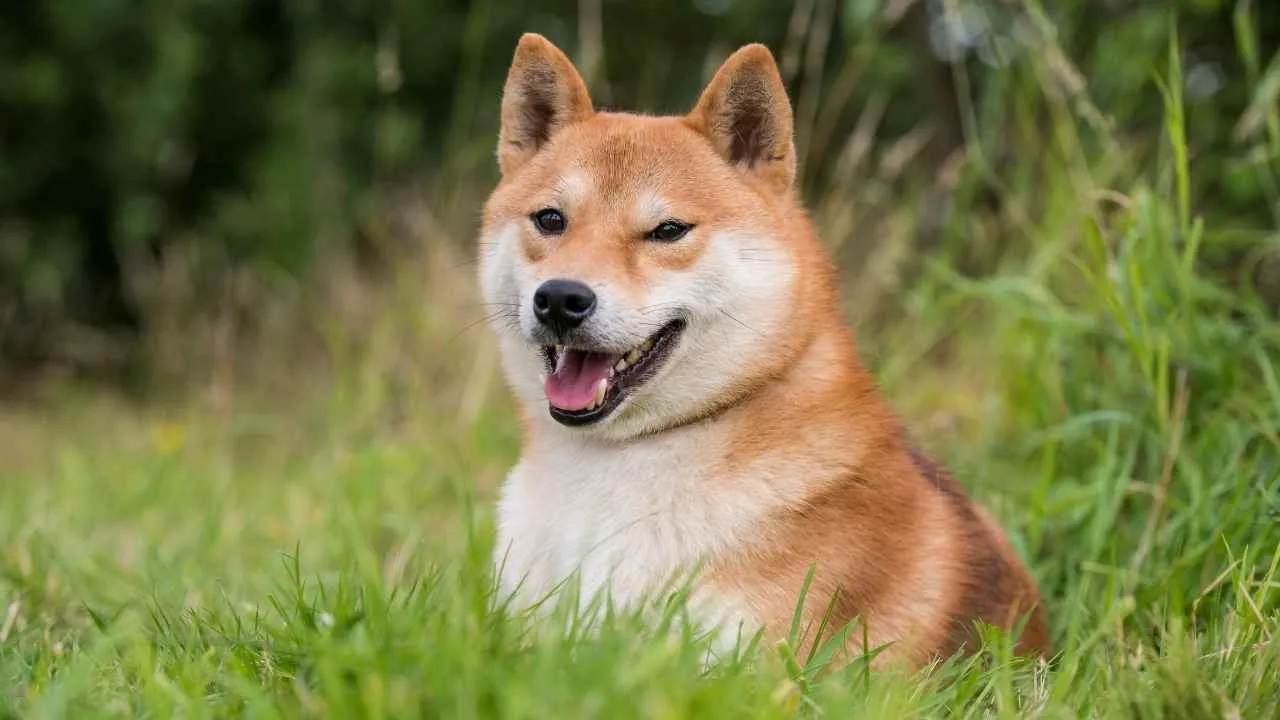
The Shiba Inu is like that clever friend who doesn’t shout but somehow always makes their presence known — often with a quirky yodel or a high-pitched “What’s going on here?!” scream.
Originally bred as a hunting dog in Japan, these small but mighty pups are packed with personality and an alertness that keeps them on guard without the typical bark-fest.
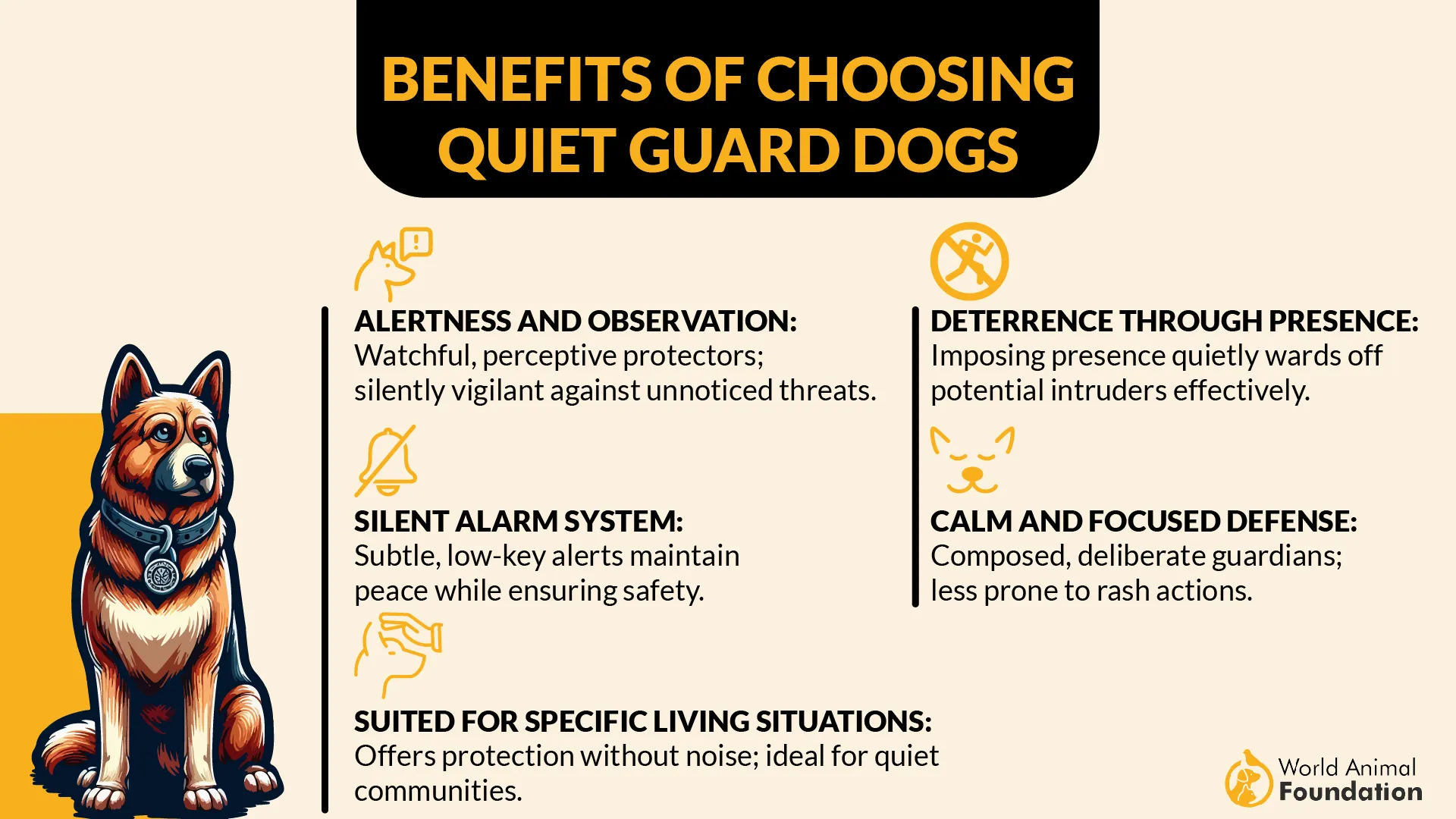
Known as one of Japan’s oldest breeds, Shibas have the classic Spitz look — thick coats, perky ears, and a curled tail that’s basically their signature move. They’re neat freaks, too, keeping themselves cleaner than most of your houseplants.
But don’t let their tidy nature fool you: these dogs are clever escape artists with a strong prey drive, so a backyard fence is never quite “Shiba-proof.” Loyal and alert, they’ll let you know when something’s up—not with barks, but with yodels, purr-like sounds when they’re feeling loved, and even a high-pitched scream that can startle the unprepared, Petplan noted.
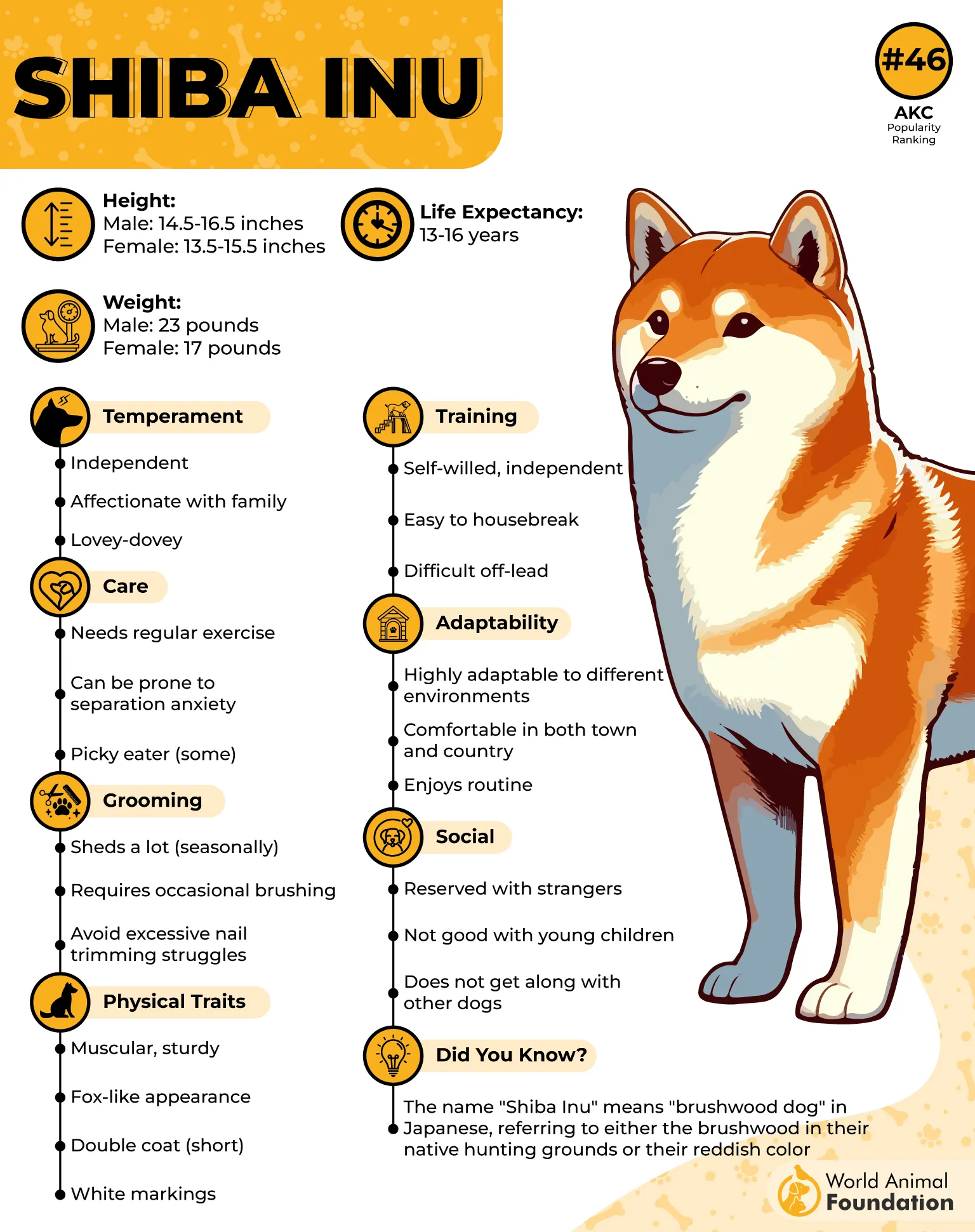
Why Shiba Inus Make Great Low-Bark Alert Dogs:
Not big barkers, but definitely chatty with unique vocalizations
Alert and loyal watchdogs with a flair for the dramatic
Clean, smart, and surprisingly sneaky escape artists
Heads up: Shibas need plenty of exercise and mental stimulation, or they’ll invent their own entertainment (which might include Houdini-style escapes). Puzzle toys and training are key to keeping these vocal ninjas happy and in check.
3. Whippet
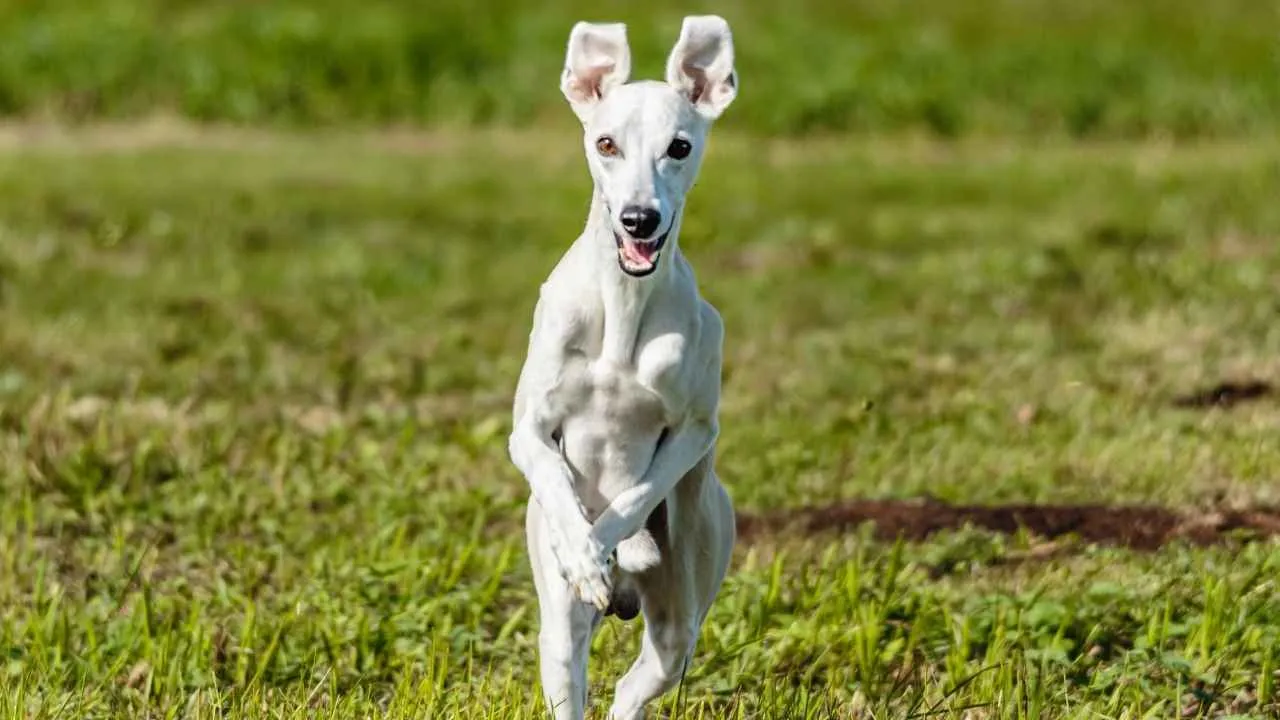
Whippets are the masters of the chill vibe. These sleek, speedy dogs are generally low on the barking scale — think more “silent observer” than “neighborhood alarm.” They’ll only let loose a bark if something really bugs them or if boredom kicks in (because even the fastest couch potatoes get restless).
Whippets look like smaller versions of Greyhounds, having been bred by crossing these speedy runners with smaller terriers. Athletic and full of enthusiasm, Whippets can reach speeds up to 35 miles per hour and love to stretch their legs with quick sprints.
They’re agile, able to change direction swiftly when chasing prey, and highly alert. But they’re not nonstop energy machines — Whippets also enjoy relaxing evenings cuddled up on the couch with their humans.
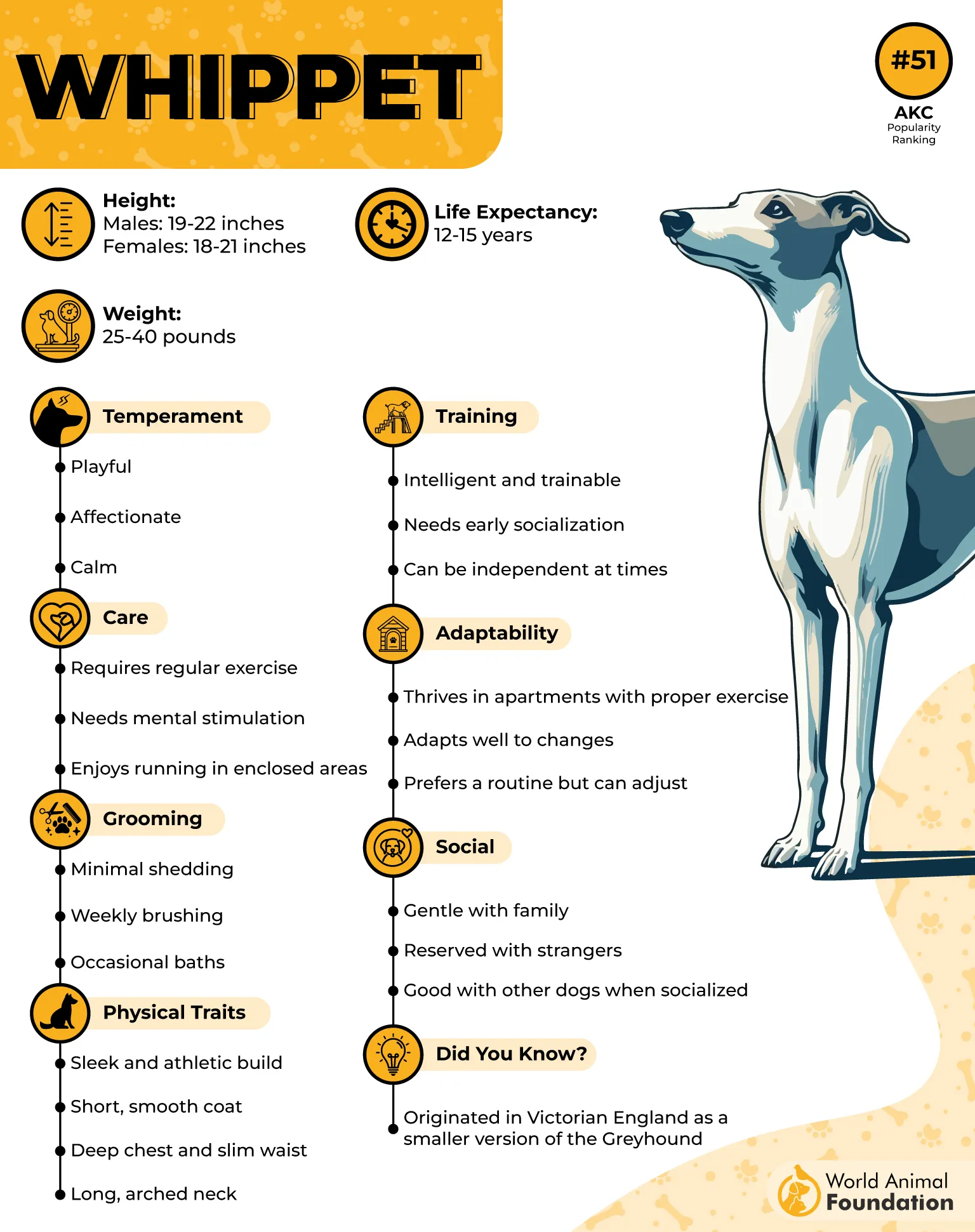
Their calm demeanor makes them great for people who want a gentle watchdog without the constant noise. But don’t be fooled — under that smooth coat is a sprinter who’s ready to zoom, then nap like a pro.
Why Whippets Are Bark-Light Buddies:
Bark only when truly necessary (or slightly annoyed)
Calm dogs and affectionate, perfect for quiet homes
Speed demons who prefer running over roaring
Heads up: Whippets thrive on exercise and companionship. Keep them busy, and you’ll have a peaceful, happy dog — plus some pretty impressive zoomies when the mood strikes.
4. Akita
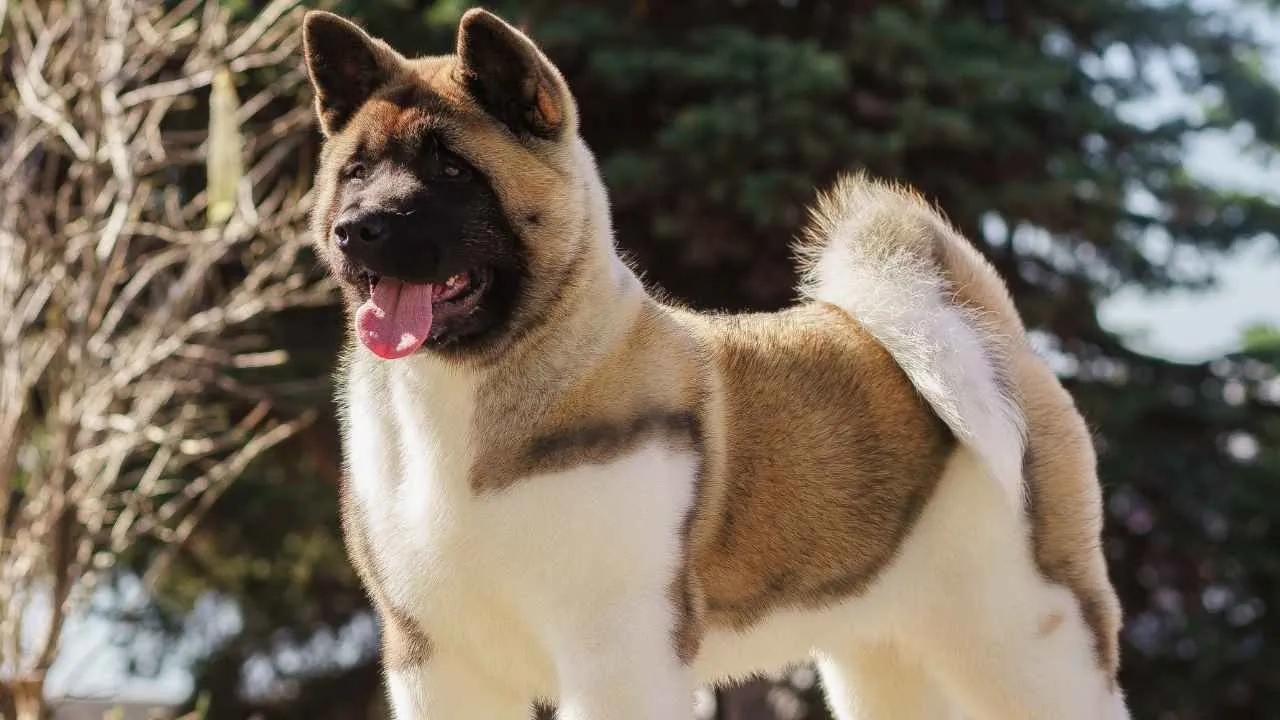
The Akita is a Japanese breed originally bred for hunting. Revered in Japan as a national monument, Akitas are often linked with good health—families sometimes receive Akita statues to celebrate a new baby or to wish someone a speedy recovery.
They resemble Shiba Inus with their foxlike faces, pointed triangular ears, thick plush coats, and fluffy tails that curl over their backs.
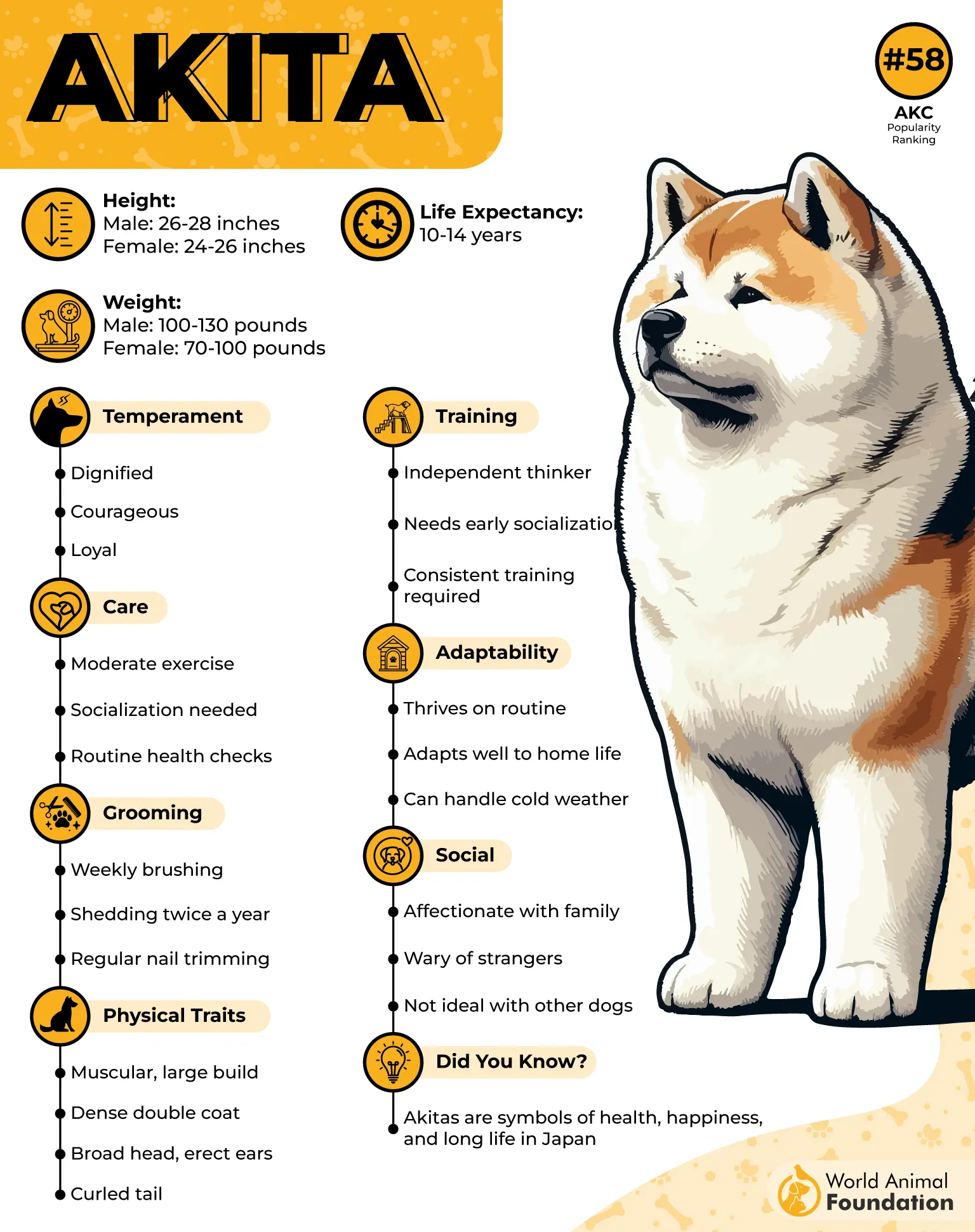
Akitas are serious about their job — alerting their family only when something truly matters. These dignified dogs aren’t fans of unnecessary noise; they bark to warn you if strangers approach or if there’s a real reason to be concerned.
Why Akitas Make Great Low-Bark Guardians:
Bark to alert, not annoy — quality over quantity
Loyal protectors with a calm but commanding presence
Vocal only when the situation calls for it
The ideal home for an Akita is with experienced owners who are committed to training, socializing, and giving their dog plenty of exercise.
They also might howl or bark if left alone too long or if another dog gets too close for comfort. But generally, their barks are purposeful and measured, not just noise for noise’s sake.
Heads up: Akitas need mental and physical stimulation plus consistent training to keep their alert nature balanced. If you want a watchdog that knows when to hold ‘em and when to fold ‘em, the Akita’s your dog.
5. Great Dane
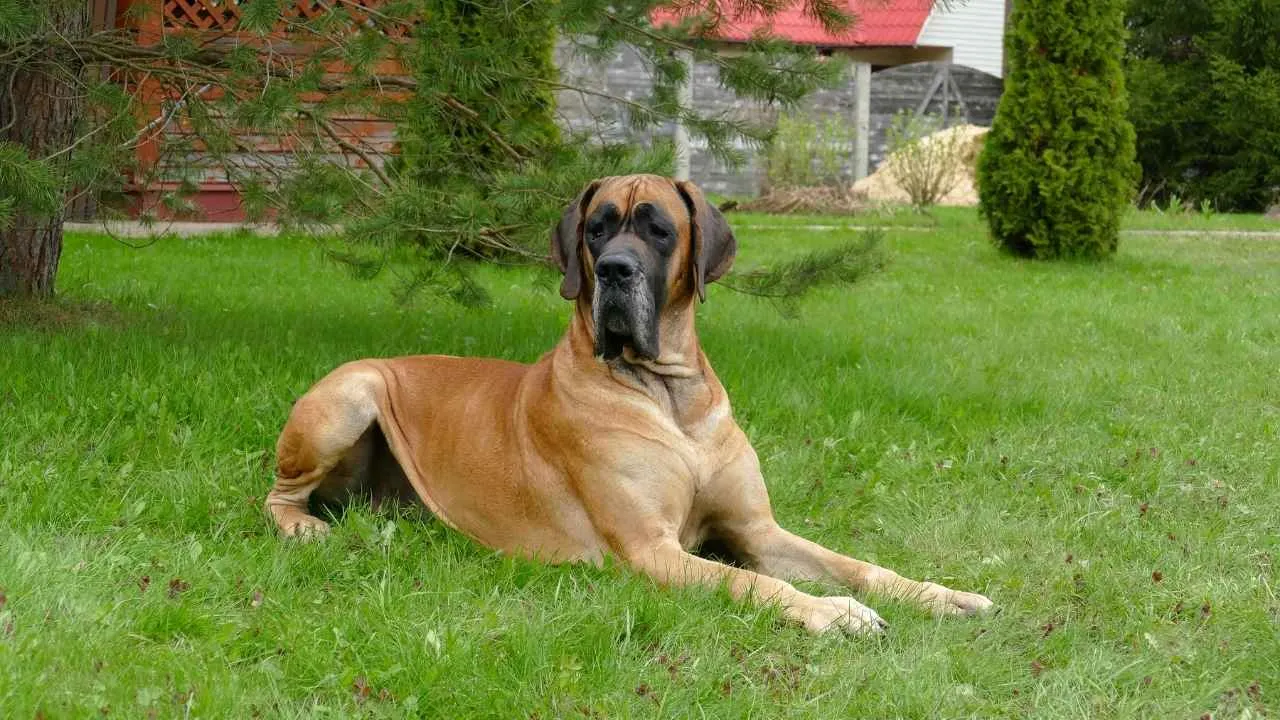
Known as the “Apollo of dogs,” Great Danes are the tallest among working dog breeds and rank among the largest breeds overall.
Don’t let their towering height fool you — Great Danes are more “couch cuddle buddy” than “constant barker.” These gentle giants have a low energy level for their size, and while they enjoy playtime, they’re just as happy settling down for some serious chill time.

Friendly to family, strangers, and even other dogs, these noble dogs are as affectionate as they are protective. As per Britannica, their size and strength mean they’re best suited for owners who can handle a big dog with a big heart.
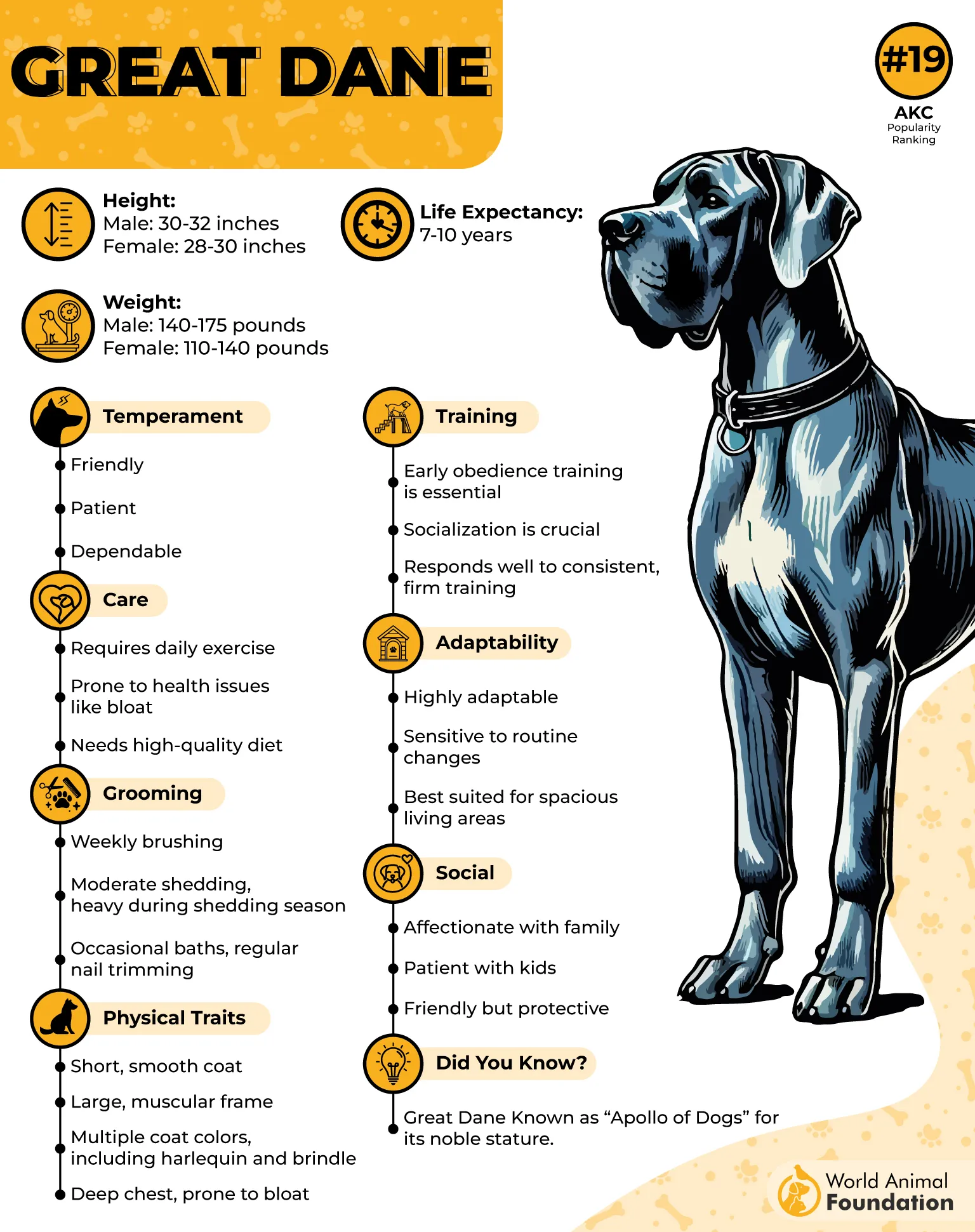
Great Danes can make wonderful family pets. They’re generally patient and tend to get along well with children, especially when socialized early on.
Why Great Danes Are Low-Bark, High-Impact Alert Dogs:
Bark only when there’s something serious going on
Calm and affectionate, perfect for families who want a gentle giant
Their size alone is often enough to keep trouble at bay
Grooming a Great Dane is relatively low-maintenance, but their sheer size means that even weekly brushing and occasional baths can take quite a bit of time.
Great Danes don’t bark without a good reason. When they do sound off, it’s usually because something genuinely needs your attention, making them excellent watchdogs without the non-stop noise. Their sheer size can be intimidating enough to send a message without a single woof.
Heads up: If you have little kids or seniors, make sure everyone’s comfortable with a dog that’s basically a four-legged couch, with paws the size of dinner plates.
6. Saint Bernard
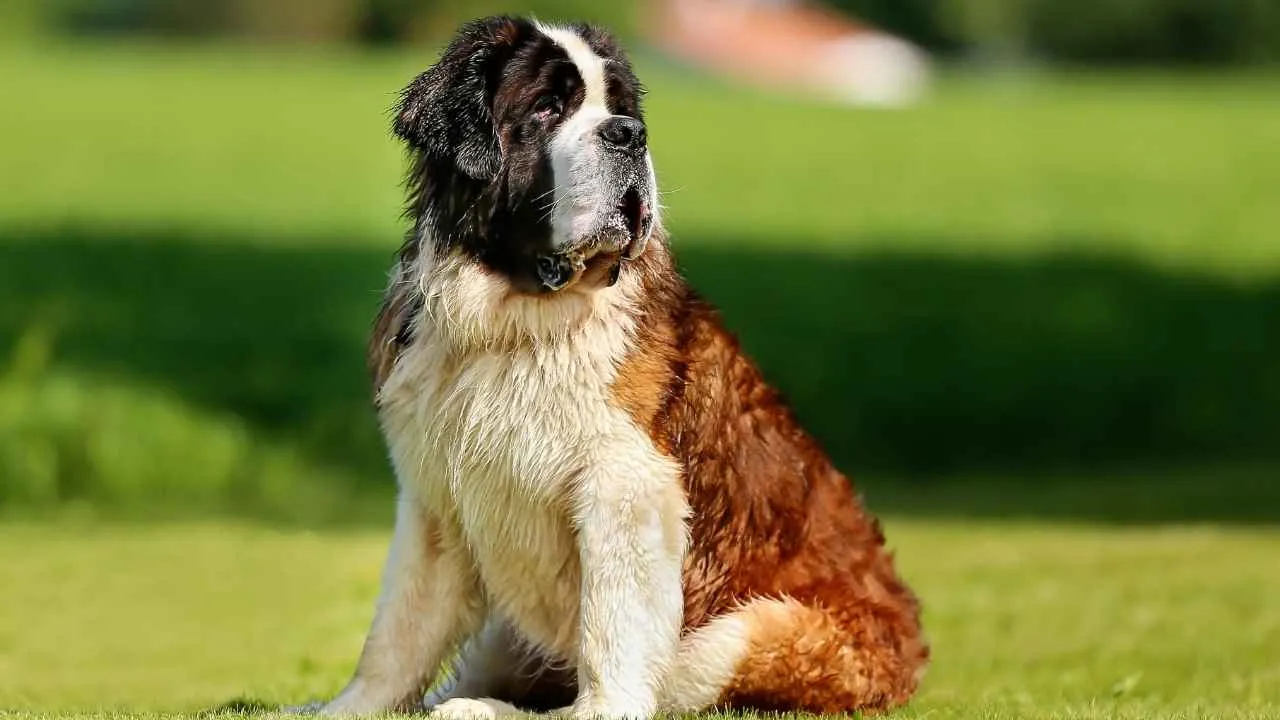
Saint Bernards are the classic “big, friendly teddy bear” of the dog world, and they usually save their barks for moments that really matter. If your Saint Bernard does get vocal, experts recommend the trusty “quiet” command — backed up with treats and plenty of love, of course.
The St. Bernard is a large working breed from Switzerland. Historically, these dogs were trained to find and rescue lost or injured travelers.

Known for their patience with children, St. Bernards make wonderful family companions, thanks in part to their remarkable ability to sense and respond to human emotions.
These gentle giants thrive when they feel safe and comfortable. Helping them relax around things that might trigger barking (like strangers or loud noises) means fewer surprise yelps and more peaceful snuggles. And honestly, with a dog that size lumbering around, you probably don’t need a constant alarm system!
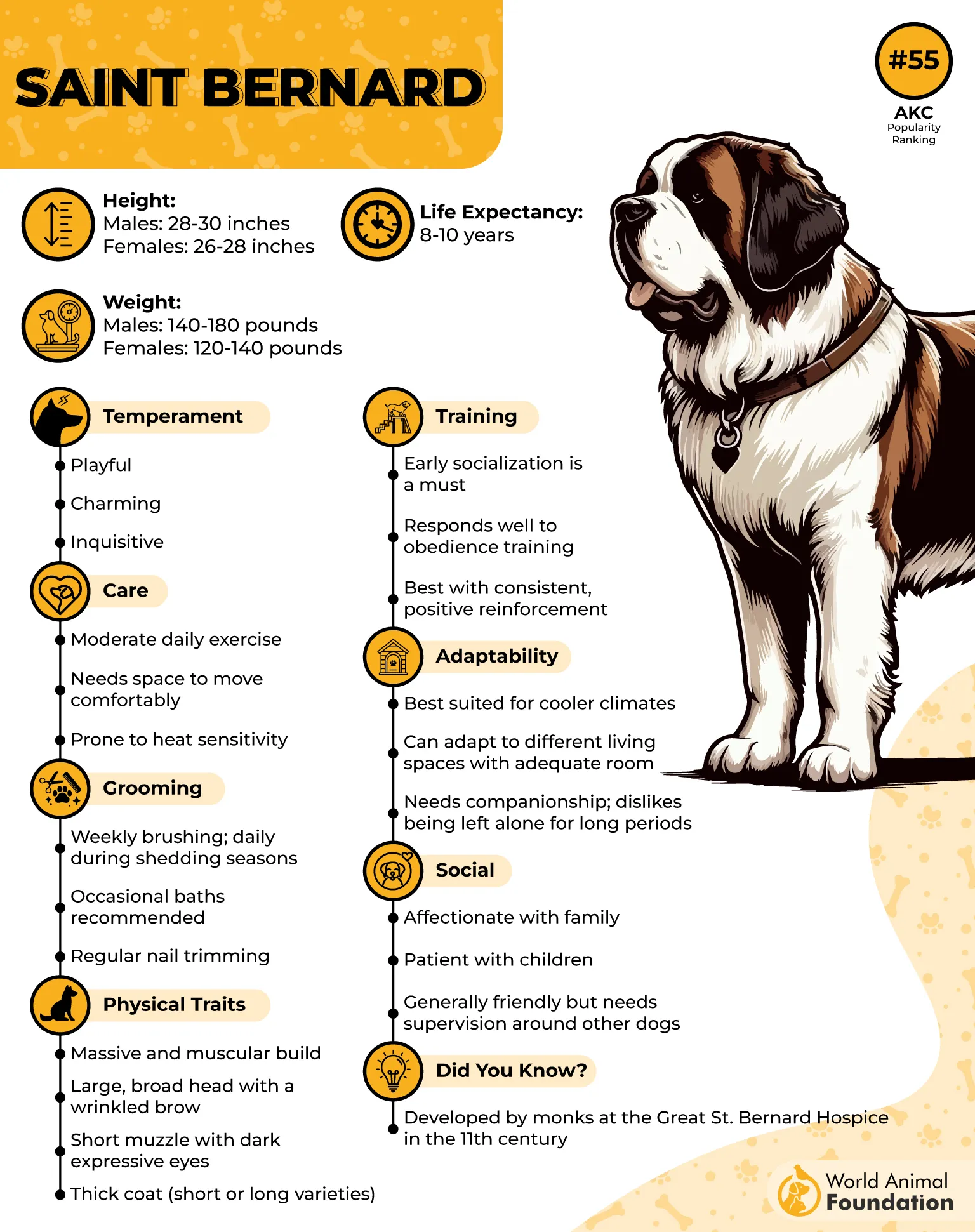
Why Saint Bernards Are Quiet But Watchful:
Bark rarely, and when they do, it’s serious business
Easy to train for quiet behavior with positive reinforcement
Big hearts and calm spirits make them wonderful family companions
They tend to be laid-back dogs who don’t require much exercise, but they do need regular playtime to stay healthy and happy.
Heads up: With their enormous size and gentle nature, they’re best for homes that can handle a giant with a soft voice.
7. Borzoi
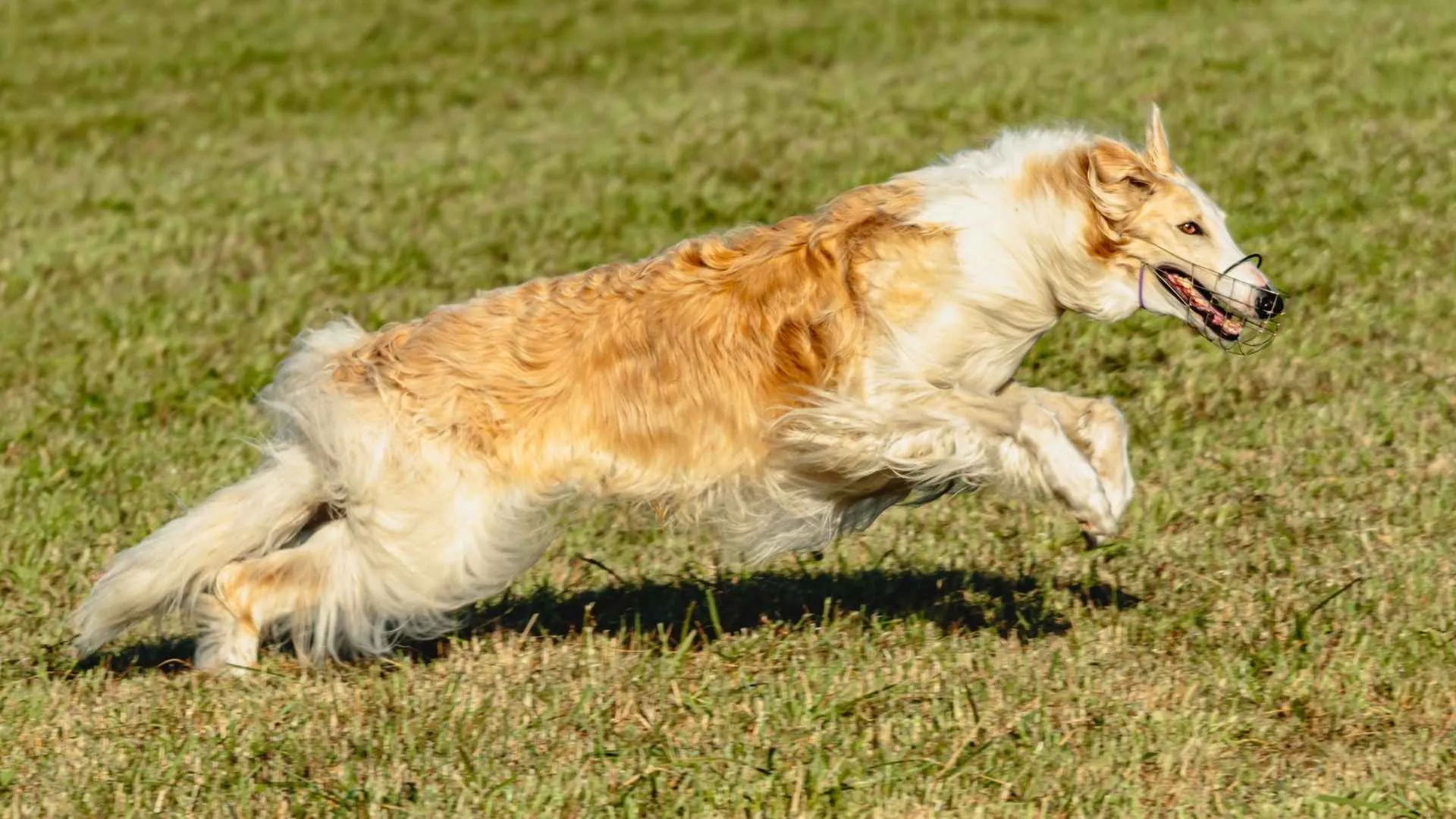
The Borzoi is the undisputed aristocrat of the dog world—graceful, poised, and carrying an air of quiet sophistication. With their flowing silky coats, long, narrow heads, and statuesque build, they’re as elegant as they come and instantly recognizable.
Known for their sleek elegance and calm demeanor, Borzois are definitely not the neighborhood loudmouths. These sighthounds are more “silent sentinel” than “barking watchdog,” quietly observing their surroundings and only raising an alarm when something truly suspicious appears.
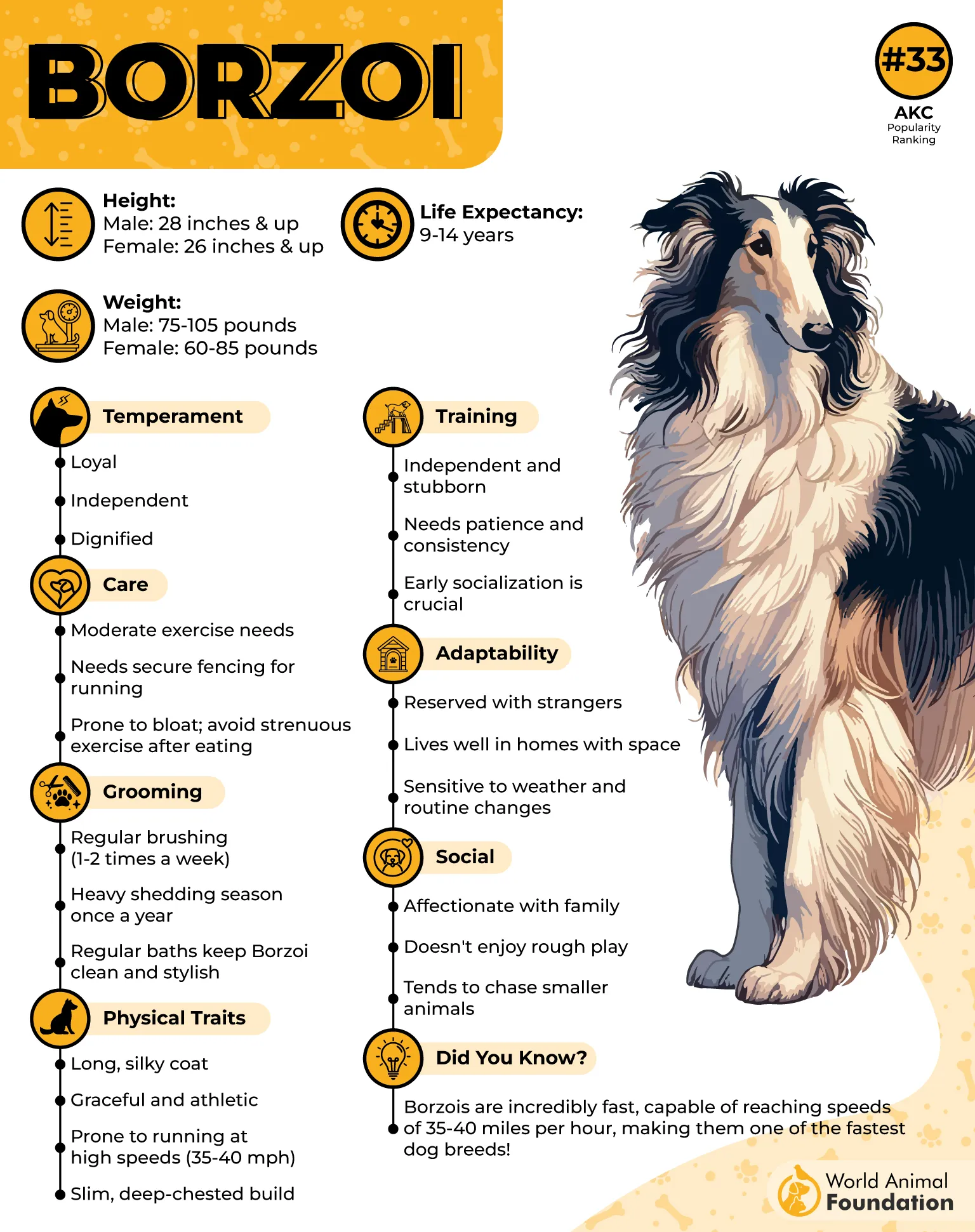
While they’re not born guard dogs, they do have a keen eye for strangers and will alert their humans if necessary. Just remember, their instinct to chase anything fast and furry is strong, so if you have cats or small pets, they better be part of the family early on!
Why Borzois Are Low-Bark Alert Pros:
Calm and quiet, often barely barking at all
Alert to strangers but not prone to unnecessary noise
Graceful and gentle, with a built-in radar for suspicious activity
They’re surprisingly space-efficient for their size, often curling up neatly like a furry question mark. While they can be aloof or reserved with strangers, they’re affectionate and loyal with their family. Beneath that dignified exterior lies a quirky sense of humor and a strong personality—traits that make sighthound enthusiasts fall head over heels.
Heads up: Borzois love their calm environments, so keeping them mentally stimulated and socialized will help keep that peaceful vibe going strong.
Conclusion
Alert dogs that don’t bark too much, like the Cavalier King Charles Spaniel, Japanese Chin, French Bulldog, and even gentle giants like Bernese Mountain Dogs and Scottish Deerhounds, are ideal for owners who want a quiet companion with a laid-back personality. While breeds like the Irish Setter and Greyhound are generally quiet, they still have a strong sense of alertness and rarely bark unless there is a potential threat.
These breeds tend to make good guard dogs without much noise, only barking when the doorbell rings or other unusual noises occur. Proper socialization helps reduce unnecessary barking and separation anxiety in noisy breeds. These dogs are a good fit for houses where owners want peace but still value alertness. Choosing such breeds means enjoying a calm home with an alert yet quiet furry friend.


